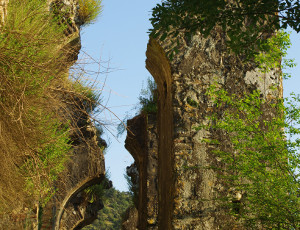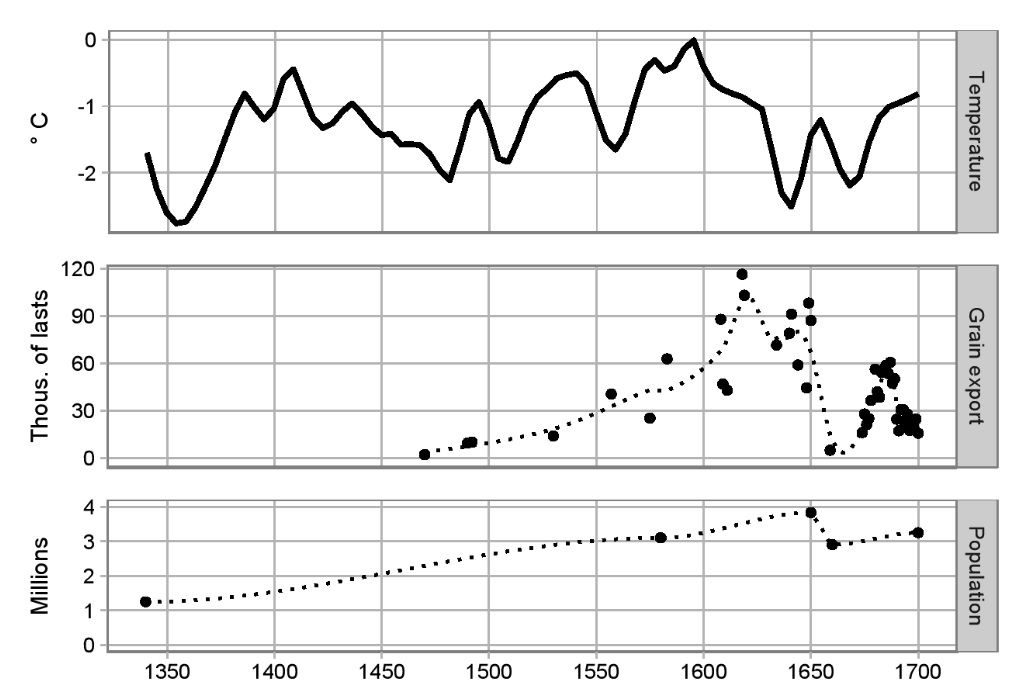
Global warming has led to the increased interest in climate changes in the past. Claims that the fall of many ancient states and civilisations can be attributed to natural disasters have become more and more popular. Are they true?
According to new hypotheses, even the collapse of the Roman Empire was primarily caused by the rapid climate cooling, rather than by the military power of Barbarian invaders.
Studies by Polish historians – Dr Adam Izdebski from the Department of Byzantine History of the Jagiellonian University Institute of History and Dr Piotr Guzowski from the Institute of History and Political Sciences at the University of Białystok - have shown that this approach is an oversimplification, which hinders the understanding of historical influences between the natural environment and human society.
The summary of their long-time research was published by one of the most prestigious research journals - Proceedings of the National Academy of Science of the United States (PNAS). The article, co-authored by Polish and foreign researchers, presents four cases from the history of Europe and America, with the aim of illustrating problems related to the illegitimate attribution of the demise of states and societies to climate factors. Two out of four historical examples included in the article are based on research by the Polish historians. The full paper is available below.
The first of these studies concerns the Mediterranean region in late antiquity. The Polish researchers argue that as the Roman era came to an end, some of its parts grew in importance. This is especially true with regard to Sicily – the granary of Papacy and Byzantium as well as inland parts of contemporary southern Syria and Jordan, which were the source of food for Damascus, the capital of the newly founded Arabian Empire. When the Roman Empire was falling apart, inhabitants of these areas could use increased precipitation for their own benefit. As rainfall obviously plays a key role in grain cultivation, its increase made it possible for the farming lands to expand to the previously uncultivated areas. However, this led to the situation in which the economy of these regions was unable to cope with the new climate change in the 8th century AD, when precipitation decreased and the regions lost their political and economic importance.
The second case studied by the Polish historians pertains to the Polish-Lithuanian Commonwealth. Since the late 16th century, its economy had been experiencing the so-called Little Ice Age. This period was characterised by a very changeable weather, including especially cold periods preceding the new harvest (known as the “hungry gap”). In recent years, a number of works have emerged that attempt to explain almost every political and economic crisis of the 17th century, including the problems faced by Poland, in terms of unfavourable climate conditions. The research by Dr Izdebski and Dr Guzowski has shown that this was a mistake. There is no significant evedence that the advent of the Little Ice Age brought about an economic crisis. Actually, it is quite the opposite. In the first half of the 17th century, grain production and population continued to rise, as they did in the “Golden Age” of the Polish-Lithuanian Commonwealth, which occurred one century earlier. It was as late as in the late 1650s that the Swedish invasion (known as the Swedish Deluge) and war with Russia badly damaged the Polish economy, so that it was no-longer “weatherproof”.

The figure presents fluctuation of spring temperatures and the most important economic indicators in early modern Poland.
Top: temperature anomalies for South-Eastern Poland (Büntgen et al., PNAS 2013);
Middle: Poland’s grain exports from Gdansk (1 last = 2.2 tones) (Biernat, Wwa 1962; Bogucka, Wrocław 1970; Samsonowicz, SHO 1974);
Bottom: Population of three major Polish regions (Bérélowitch, Gieysztor, Paris 1997).
Source: Haldon et al., PNAS 2018 (the summarised article).
An in-depth analysis of these phenomena would not be possible without a close cooperation between historians and climate scientists. Natural science methods allow researchers to retrace climate fluctuations in the past as well as landscape changes which enrich historians’ knowledge about old agriculture. As stressed by Dr Izdebski and Dr Guzowski, interdisciplinary cooperation in general and in particular breaching the gap between history and natural sciences is necessary to conduct research into interactions between climate, environment, and society. It turns out that combining different approaches to the same problem often leads to brand new discoveries.
This kind of research has been carried out for several years at historical faculties in Kraków and Białystok. Besides investigating the role of climate change in the history of Rome and Byzantium, the team of Jagiellonian University historians and natural scientists have also studied the history of Kraków. The researchers are trying to find out whether the current ecological crisis in Kraków is a new phenomenon or a long-term process, which could have an even several-centuries-long history
The team from Białystok is running a large project concerning the environmental and economic history of northern Poland. It combines traditional historical research carried out in church archives in Peplin and Gniezno with drillings on peat bogs in Greater Poland and Pomerenia, conducted by a group of researchers from the Adam Mickiewicz University in Poznan.
The research by historians published in the American journal PNAS is funded within the framework of the National Programme for the Development of Humanities.
Translated from the Polish text by Dr Adam Izdebski and Dr Piotr Guzowski





